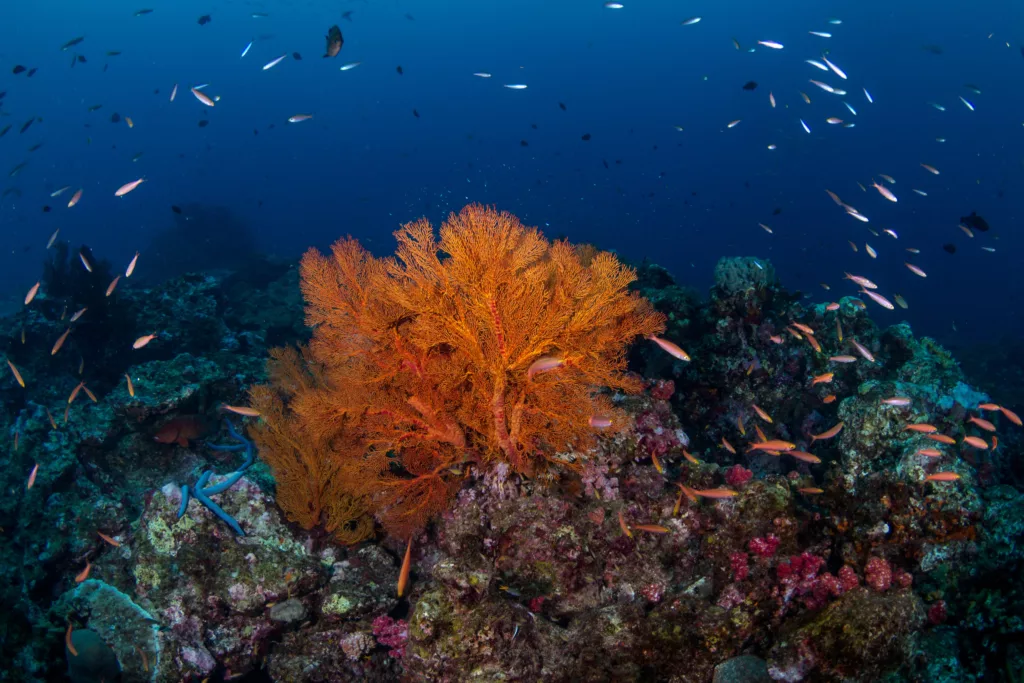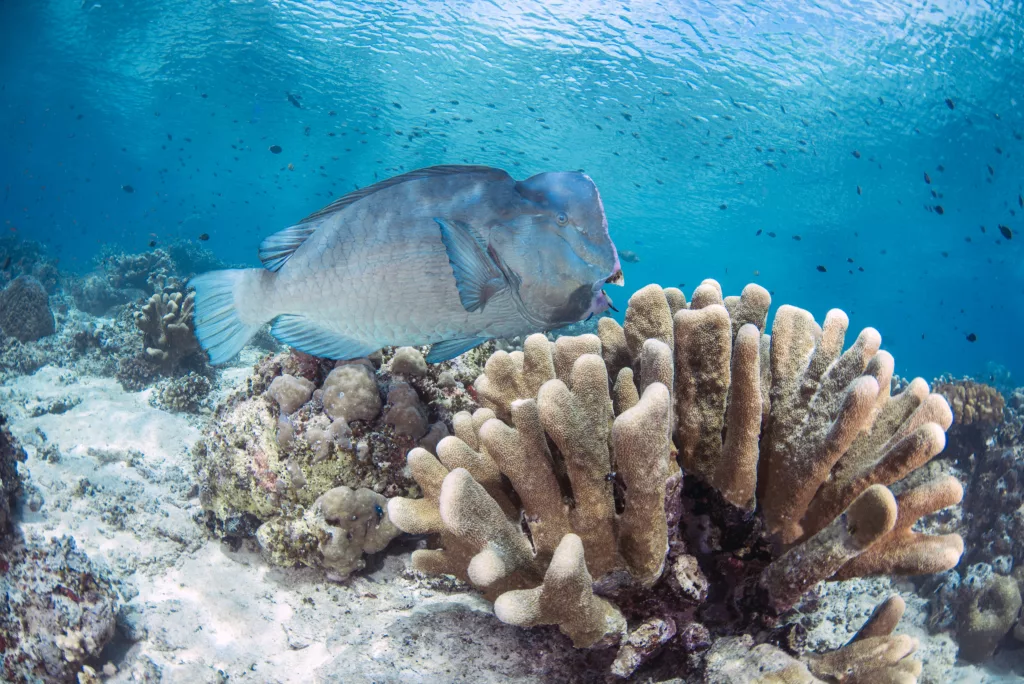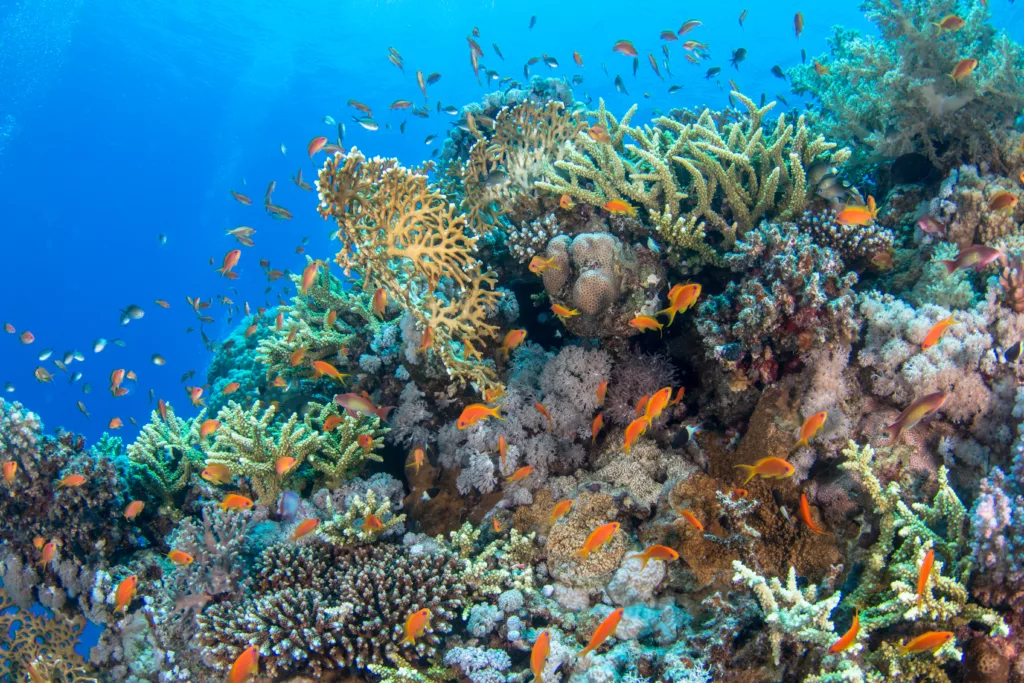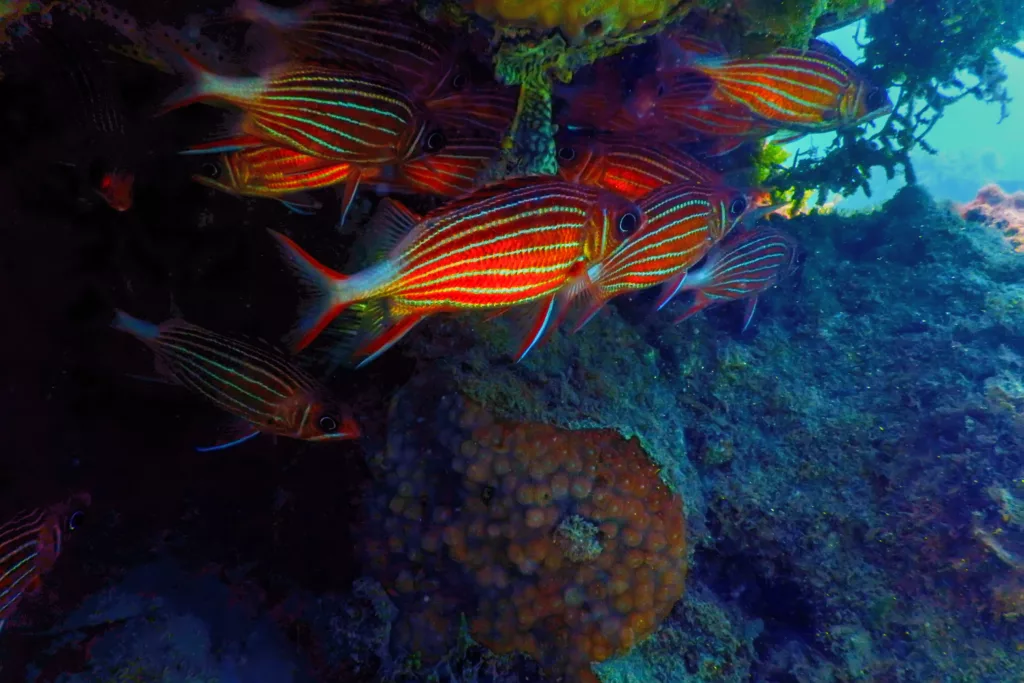Imagine descending into the vast blue, where each bubble accentuates the quietude of the underwater realm. Scuba diving offers a surreal escape into Earth’s lesser-known territories, but this beautiful adventure demands more than just enthusiasm—it requires effective non-verbal communication. Primarily, hand signals in diving transcend mere technique; they ensure safety, clarity, and coordination among divers. This comprehensive guide explores the vital importance of mastering hand signaling for anyone diving, particularly in the must-visit dive sites of Bali, a crown jewel of Indonesia’s underwater adventures.
The Essence of Hand Signals in Scuba Diving
In the silent, enigmatic world beneath the waves, scuba divers rely on hand signals as their primary form of communication. These gestures are essential not only for basic interaction but for the safety and coordination of dive activities. Being adept with hand signals allows divers to convey important messages such as ‘low on air’, ‘problem’, or ‘observe that fascinating creature’ without the need for verbal communication, which is not possible underwater. Each gesture holds significant meaning, and the clarity of these signals can determine the efficiency of a diver’s response to critical situations. For instance, a simple thumbs-up not only means ascending but also signifies the end of a dive, which shows how versatile and crucial these signs are. Mastering hand signals involves regular practice and understanding the nuances of each gesture. Divers must ensure that their signals are clear and visible, maintaining direct eye contact during communication, which enhances mutual understanding and ensures that essential messages do not get lost in translation. This silent language forms a bond between divers, creating a safety net that surrounds each member of the dive group and ensures that every dive remains a memorable and safe experience.
High Signal Dive Communication: A Tool for Enhanced Safety

The ‘High Signal’ is a critical hand gesture in the diver’s toolkit, used predominantly to communicate the need to ascend. This signal involves the diver pointing upwards, clearly indicating the intent to move towards the surface. It is crucial for avoiding miscommunications which could potentially lead to serious health conditions like decompression sickness, where dissolved gases come out of solution into bubbles inside the body due to rapid changes in pressure. Mastering the High Signal not only ensures the safety of the diver by facilitating a controlled and planned ascent but also acts as a medium to express distress or the need to surface due to other unforeseen issues. Divers are trained to use this signal decisively and clearly, making it an indispensable part of dive planning and execution. In scenarios where visibility is reduced, or a diver is distressed, a clear, unmistakable signal becomes the cornerstone of safety and effective diver recovery procedures. Regular practice and clear understanding of this gesture’s importance are vital, as it strengthens the diver’s ability to maintain control under varying circumstances, thereby enhancing overall dive safety.
Diving in Bali: Unique Signals for Unique Experiences

Bali, a renowned diving destination, offers divers unique underwater experiences such as swimming with the majestic Manta rays at Manta Point or exploring the historical USAT Liberty Shipwreck at Tulamben. Each site has its distinct challenges and attractions, necessitating specific hand signals that might not be standard elsewhere. Divers often encounter diverse marine life and varying currents, making it essential to have a repertoire of site-specific gestures. For example, specific hand signals to denote different types of marine life can greatly enhance the dive experience, allowing divers to share their sightings without confusion. Adapting to these unique signals can significantly boost a diver’s confidence and safety while exploring Bali’s underwater marvels. The process of learning and adapting to these unique hand signals involves research and guidance from experienced local divers, who can provide insights into the nuances of the region’s aquatic environment. This tailored approach not only ensures safety but also enriches the overall diving experience, allowing for full immersion in the visual and ecological richness of Bali’s marine environments.
Practical Tips for Honing Your Hand Signaling Skills

Enhancing underwater communication skills, particularly hand signaling, is vital for any scuba diver. This skill transcends beyond mere memorization of signals; it encompasses the development of an intuitive sense of gestural language during dives. Divers can hone their signaling skills through regular practice in varied diving environments, which can be as diverse as the vibrant ecosystems of the Coral Triangle. Observing experienced divers and learning from instructional videos are also excellent ways to improve proficiency. These practices help divers become more fluid and automatic in their hand signals, reducing the likelihood of miscommunication. Additionally, diving in different locations exposes divers to a variety of situations where different signals might be necessary, thereby broadening their communication skills. Consistent practice in different settings not only builds muscle memory but also enhances a diver’s quick thinking abilities in responding to both routine and emergency situations with clear gestures. Ultimately, the goal is to achieve agility in using hand signals, making them as natural and reflexive as speaking is on land.
Travelling to Dive Sites: Preparing for Underwater Communication
Traveling to dive sites, especially exotic ones like Bali, requires meticulous planning not only regarding the practical aspects such as gear and accommodation but also in preparing for effective underwater communication. Divers should invest time to learn about local diving conditions and the specific communication practices prevalent at their destination. This includes engaging with dive briefings thoroughly and interfacing with local dive guides to understand any unique signals or protocols used in that region. Such preparations help divers assimilate into the local diving culture, preempt confusion, and ensure a smoother, safer dive experience. Learning local signals and understanding regional diving etiquettes not only enhance safety but also enrich the diving experience, allowing divers to more deeply appreciate the nuances of the underwater world they are exploring. Additionally, these preparations involve reviewing safety procedures and ensuring all communication devices and gear are adapted to the local diving environment, thus setting the stage for a memorable and secure diving adventure.
Mastering the Silent Language: Enhancing Dive Safety with Effective Hand Signals
Mastering effective hand signaling is not merely about learning gestures; it’s about ensuring safety, enhancing mutual understanding, and increasing the overall enjoyment of diving. From high signal gestures to location-specific nuances in Bali, effective communication is your best companion in the underwater realm. Remember, each gesture you make while submerged is more than a signal – it’s a crucial interaction that ensures every dive remains a safe and exhilarating adventure. Embrace these tips and master this silent language to transform your underwater interactions across the world’s most stunning dive sites.


I’m a seasoned diver and I have to say that this article has reinforced the importance of hand signaling in my mind. It’s amazing how much of a difference it can make in ensuring safety and enjoying your dive.
Dear Natalie, thank you for sharing your valuable experience with us! We’re thrilled to hear that our article has reinforced the importance of hand signaling in your mind. At Pebble and Fins, we believe that effective communication is key to a safe and enjoyable diving experience. Our resort in Bali is dedicated to providing top-notch training facilities for local staff and surrounding communities. If you have any questions or would like to know more about our mission, please don’t hesitate to contact us at [email protected] or +62 857 3891 8262. We look forward to welcoming you back to Bali soon! Best regards, Pebble and Fins.
This article has really opened my eyes to the need for effective hand signaling in diving. As someone who loves exploring new dive sites, I’ll definitely be taking note of these tips and practicing them more.
Dear Rafiq, thank you for sharing your thoughts on our article! We’re thrilled to hear that it has opened your eyes to the importance of effective hand signaling in diving. At Pebble and Fins, we believe that mastering this silent language is crucial for ensuring safe and enjoyable dive experiences. To take your skills to the next level, consider reaching out to us at [email protected] or +62 857 3891 8262 for guidance on our dedicated training facilities and courses in Bali. We look forward to helping you enhance your diving experience!
I must say, I’m impressed by how thoroughly you’ve covered the importance of hand signals in scuba diving. As a beginner diver myself, I can attest to the value of clear communication underwater.
Thank you so much, Elaine! We’re thrilled to hear that our guide has been informative and helpful. At Pebble & Fins, we believe that effective communication is key to a safe and enjoyable diving experience. That’s why we’ve made it a priority to provide comprehensive training on hand signals for all our guests. If you have any more questions or would like to learn more about our courses, please don’t hesitate to reach out to us at [email protected] or call +62 857 3891 8262. We’d be happy to help you take your diving skills to the next level! And who knows, maybe one day you’ll join our team as a dive instructor and share your passion with others.